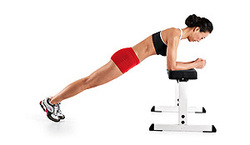|
Exercise can help us sleep better and reduce our risk for chronic disease—but does it matter when you do it? New research on mice from the University of California, Los Angeles’s Brain Research Institute suggests that exercising during the daytime can improve your sleep and reduce your risk for health problems that are associated with a disrupted internal clock, like fatigue during the day, difficulty sleeping, weight gain, and dysfunction of the cardiovascular and immune systems. What they did not find, as some media outlets reported, is that the afternoon is the best time to exercise in order to reap these benefits. Researchers observed several groups of mice running in their wheels. Some were otherwise healthy and some were bred to have a malfunctioning internal clock, or circadian timing system. Some mice could run whenever they wanted, while others only had access to the wheel at the mouse equivalents of morning and afternoon (they’re nocturnal). Exercise improved the functioning of the internal clock in all of the mice, but in the mice with “broken” clocks, the effect was more pronounced in the afternoon. Lead author Christopher Colwell, Ph.D., who has studied circadian rhythms for 30 years, says that our brain’s internal clock governs most aspects of our behavior and physiology by telling our cells what time it is and what they should be doing, like maintaining organ function (daytime) or going into repair mode (nighttime). Aging, nervous system diseases, and exposure to artificial light at night can all disrupt our circadian rhythm and, he says, “disruption of the clock has profound influence throughout the whole body.” Colwell says this study raises the possibility that there may be a difference in how exercise in the morning versus the afternoon affects the clock in humans, but he’s not aware of any literature on that premise. “I’ve been getting some emails from people who exercise in the morning and they feel great and they’re saying ‘Well, should I change that?’ Absolutely not,” he says. “Right now, we feel comfortable saying that exercise during a human’s daytime would be beneficial, while the same exercise during the normal sleep time would be disruptive to these rhythms.” This study, which appears in the Journal of Physiology, did not examine the effects of late-night exercise, but unpublished results from Colwell’s lab show that working out at the equivalent of 11pm disrupts the clock. Colwell says that sweating in the morning and late afternoon and maybe even the early evening are perfectly fine, but he says, “I would caution, as I have observed anecdotally, that if your only option is exercising at midnight, you might want to skip it that day.” It can affect your sleep and throw off the clock: We get sleepy when our internal body temperature starts to decline and vigorous exercise causes a spike in core temperature, which delays the process. via Women's Health Magazine
0 Comments
Core fitness exercise has become synonymous with abdominal conditioning. In terms of core stability, the abdominal muscles do little. Without proper strength and conditioning of all core muscles, injury, aches and pains can occur more frequently. The core of the body is responsible for supporting the back, spine and shoulders. Core fitness exercises should aim to strengthen all muscles related to these areas.
Choosing Effective Core Fitness Exercise In order to choose effective core fitness exercises, you must first learn the muscles supporting the core of the body. The core muscles begin at the top of the abdominal trunk and run down to the lower torso. These muscles include the:
Strength and power originate in the core of the body. When the trunk, torso and pelvis are strong and stable, power is transferred to all other muscles. Powerful contractions, such as rapid muscle movements, require a strong core. The more stable the core, the more energy transferred to the muscles leading to quicker repetitions and more effective training. Improved Posture Core fitness exercises also support proper posture. Imbalances of posture can lead to improper weight lifting form, injuries, and undue pressure on the lower back. Pressure and pain of the lower back is a common symptom of weak core muscles. Improved Balance The abdominal muscles are important to core stability and strength. When the abdominal muscles are weak, the lower back holds additional pressure and weight from simple daily tasks like walking. When exercising, this pressure grows exponentially leading to painful back injuries. Strengthening the abdominal muscles allows the weight of the upper body to be evenly distributed over the front and back. When weight is distributed, balance improves. Working the Torso as a Solid Unit The torso can be pictured as a solid unit. This unit needs to be strong and stable like the frame of a car. If the torso is weak, the muscles of the body will not perform at optimal levels. Core fitness exercises can help build stability of the core. Building strength in the core of the body does not require weights or gym machines. The most common core exercises include:
from fitday.com  45-Degree Plank Start to get into a pushup position, but bend your elbows and rest your weight on your forearms instead of on your hands. Place your forearms on a bench instead of on the floor. Your body should form a straight line from your shoulders to your ankles. Brace your core by contracting your abs as if you were about to be punched in the gut. Hold this position for 30-60 seconds--repeat 2-3x. |
Archives
January 2023
CategoriesAll Abdominals Abs Allergies Austin Tx Bench Carbs Cardio Clients Core Diet Excuses Exercise Fiber Fitness Fruits Grains Health Injury Prevention Lean Mass Log Motivation Muscle Overcoming Personal Trainer Personal Trainer Austin Tx Personal Trainer In Austin Tx Personal Trainers In Austin Texas Personal Training Plan Plank Plateaus Procrastination Roadblock Running Schedule Shoulders Stall Summer Time Management Tummy Fat Vacation Vegetables Weight Loss Workout Workouts |
 RSS Feed
RSS Feed